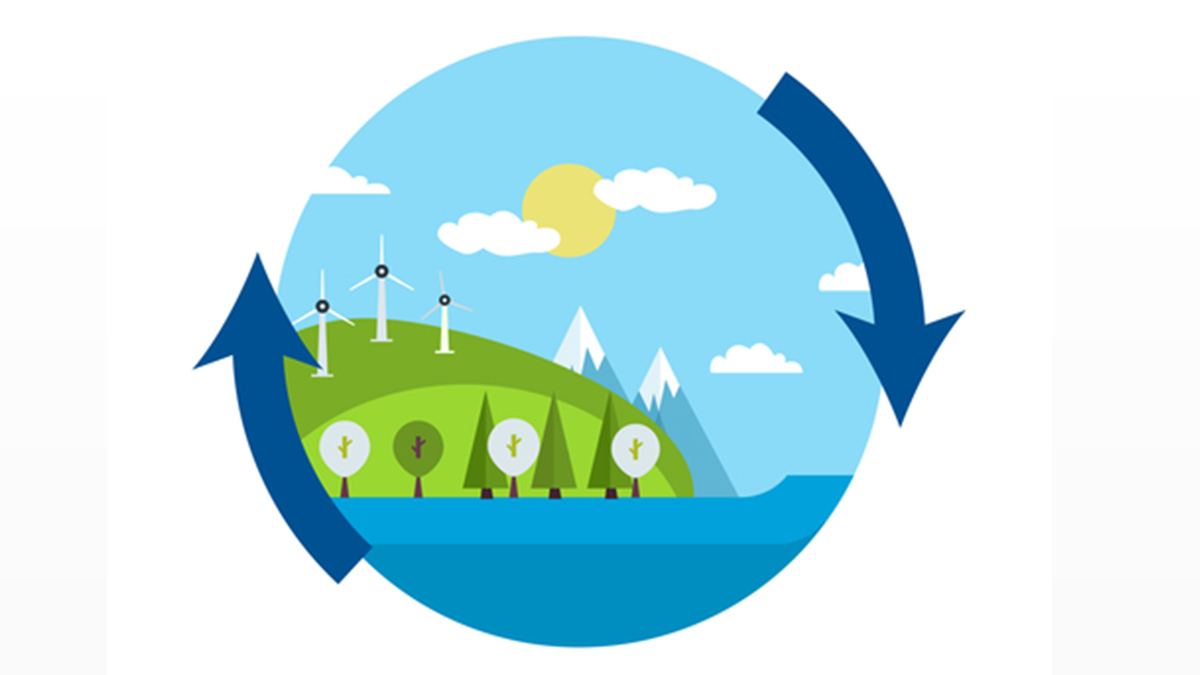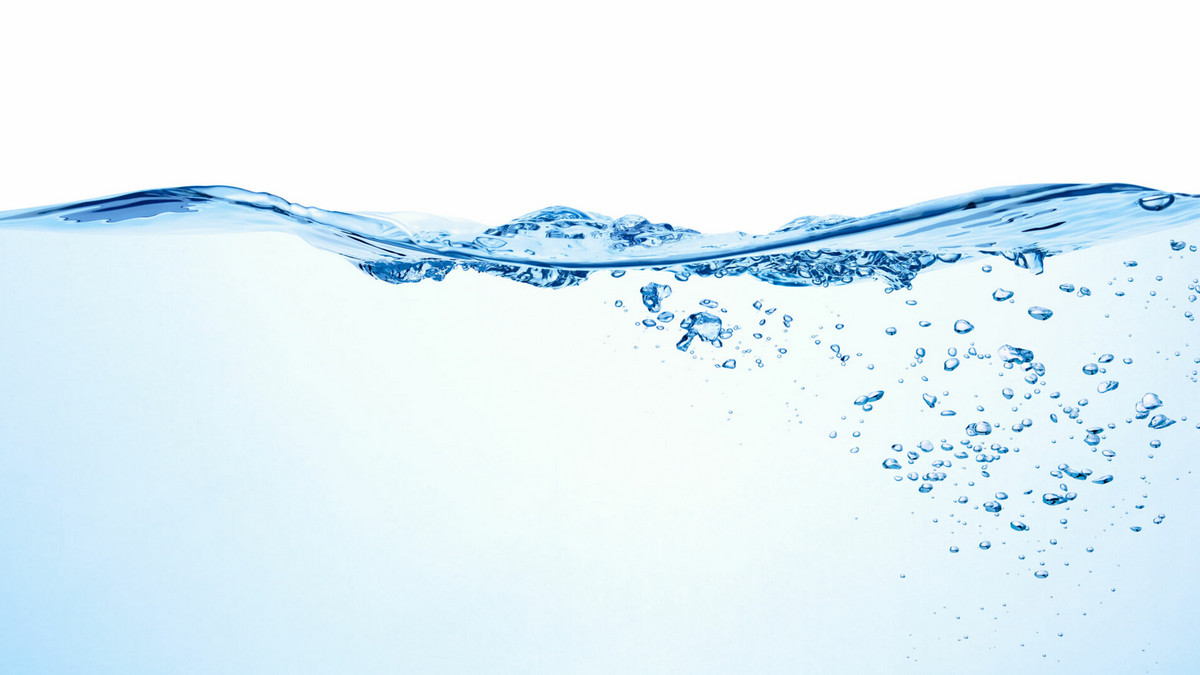Looking forward to the global offshore wind power market from 2019 to 2030, the annual compound growth rate will reach 15.2%. The global cumulative installed capacity will reach 86GW in 2025 and 142GW in 2030. China, the UK, and Germany will become the world’s top three markets. India, the United States, and Taiwan will become emerging markets with the greatest growth potential!
Global energy transition
Focusing on the 2025 wind power market
From 2018 to 2020, the global wind power market will show steady growth. According to GWEC 2019 global wind power market data, the global wind energy industry's new installation capacity exceeded 60GW (million quints) in 2019, an increase of 19% compared to 2018, and the global cumulative installed capacity reached 650 GW, an increase of 10% compared to the previous year. Among them, the onshore wind market has reached 54.2 GW of new installations; the offshore wind market has broken through the 6GW milestone, accounting for 10% of the global new installations, becoming the highest level so far.
The Asia-Pacific region continues to lead the development of global wind power, accounting for 50.7% of global new installations in 2019, followed by Europe (25.5%), North America (16.1%), Latin America (6.1%) and Africa and the Middle East (1.6%). The top five markets for global new installations in 2019 are China, the United States, the United Kingdom, India, and Spain. These five markets together accounted for 70% of global installations in 2019. From the perspective of cumulative installations, as of the end of 2019, the top five markets remained the same as 2018, China, the United States, Germany, India, and Spain. These five countries together accounted for 72% of the total global wind power installations.
Reviewing GWEC's 2018 global wind power market data shows that in 2018, the global offshore wind power installed capacity was 4,351MW, a slight increase of 0.4% compared to 2017. The top three newly added countries were China (38%) and the United Kingdom (30.2%), Germany (22.3%).
In 2018, the cumulative installed capacity of offshore wind power generation worldwide was 23,218MW. The United Kingdom ranked first in the global market share of large-scale offshore wind power development countries with 35.2%, followed by Germany with 27.5%. From 2018 to 2020, the global wind power market will show steady growth. However, in 2020, the world will be affected by the COVID-19 epidemic. After 2020, the global wind power market expects that the capacity of installations will be adjusted downward due to the epidemic. According to the industry data forecast of the Industrial Bureau As wind power manufacturers were affected by factors such as city lockdowns, population, and traffic control during the epidemic, factories in China, Europe (Italy, Spain, UK), the United States, and India have been shut down, and the upstream supply chain has zero Insufficient supply from component plants will cause significant delays in the construction schedule of complete system plant delivery and wind farm construction and grid connection, and the power generation schedule will be delayed. On the other hand, offshore wind power is mainly affected by the epidemic, which may cause the development timeline to be lengthened. The assessment will affect the development of the industry for more than 5-10 years. Examine the overall economy, environment, and global financial investment order, and postpone the pace of development and investment.
The market outlook for the global wind power industry
The market outlook remains optimistic, with an estimated annual growth rate of 4% in the next five years
The Global Wind Energy Association (GWEC) predicts that the volume of new installations in the next five years will exceed 355GW. In other words, before 2024, there will be nearly 71GW of new installations each year, and the global offshore wind power market will grow at a compound annual growth rate of 15.2% from 2019 to 2030. In 2025, the global cumulative installed capacity will reach 86GW. At 142GW, China, the United Kingdom, and Germany will become the world's top three markets, while India, the United States, and Taiwan will become the emerging markets with the greatest growth potential.
At the beginning of the next five-year forecast period, market growth will continue to be driven by government support mechanisms, such as Feed-In Tariff (FiT), Production Tax Credit (PTC), auction plans, and national or state renewable energy targets.
Taking into account the ongoing installation boom in the two largest markets in the world - China and the United States, with the gradual withdrawal of government support mechanisms and the incentive of chasing 100% PTC values, new installation records may appear in 2020.
From 2021, although PTC will continue to be the main driver of installation in the United States, the one-year extension of PTC passed by the Senate in December last year is most likely to trigger a new installation boom in 2024, but the rest of the world is expected to be based on tenders or other market mechanisms for wind power development.
Looking forward to 2020-2024 global wind power market
-
Offshore wind power:The global offshore wind power market is expected to grow from 6GW in 2019 to 15GW in 2024, increasing its share of the global new device market from 10% today to 20% in 2024. In Asia, China will become a major contributor in the next five years, followed by Taiwan and Japan. In the United States, the first batch of utility-scale offshore facilities (>800 MW) is expected to be completed by 2023.
-
Africa/Middle East:It is estimated that in the next three years (2020-2022), Africa/Middle East will have a stable output of approximately 1.45GW per year, and the annual market size may double, mainly due to the increase in output in Africa's largest market-South Africa and Saudi Arabia in the Middle East Expected installation volume in Arabia.
-
Asia (excluding China):It is expected that in the next 2-3 years, challenges related to project execution and market outlook 2020-2024 global wind power market overview field design will be resolved, and India will continue to be a major driving force in the region. Considering Vietnam's recent peak in installed capacity, improved policy environment, and growth in economic and power demand, Vietnam is a market worthy of attention in Southeast Asia. If the governments of Indonesia and the Philippines implement the recent proactive policy statements, they can release more transactions.
-
The Pacific Ocean:In the next five years, most of the demand in the region will come from Australia, but it is expected that New Zealand will also have small-scale projects, including re-generation. New solutions such as hybrid projects and microgrids will continue to create opportunities in the region while increasing the integration of renewable energy.
-
Europe:As a mature market, the onshore wind power market in the 28 EU countries is expected to remain stable, and the annual installed capacity in the next five years is expected to reach the level of 11-12GW. It is expected that the European market other than the 28 EU countries will also have more and more growth, such as Turkey and Russia, the government will continue to implement auctions and tenders.
-
America:In Latin America, government support and economic stability at the national level are uneven. However, it is still possible to stabilize the annual installation of 4GW, mainly driven by the recovery of the Brazilian market and private market demand. In the next five years, despite the power purchase contract power. The Power Purchase Agreement (PPA) and the state-level Renewable Portfolio Standard (RPS) will continue to drive growth, but PTC will remain the main driving force in the US market.
-
China:2020 will be the best year for China's onshore wind power, because there are more than 50GW planned projects with a deadline of December 31, 2020, are being implemented to obtain the previously approved FiT qualification. The installed capacity after 2021 will be mainly contributed by unsubsidized onshore wind power, but until the previously approved pipeline projects are in normal operation, the amount of new installations is unlikely to decline.
Key developments in the global offshore wind power market
In order to mitigate the impact of climate change on the environment, the development of renewable energy has become an international trend. In addition to the government’s main push to reduce carbon pressure, many international companies have promised to increase their own green power use ratio and require upstream supply chains to follow up together. Among them, in recent years the offshore wind power with the high growth rate of global installations is one of the most eye-catching sources of green power. In fact, the world’s first offshore wind farm was installed in Denmark in 1991. At that time, the stand-alone power generation capacity was only 450kW and the power generation cost was equivalent. It is expensive, difficult to compete with other technologies, and countries have not had strong policy support, and have not seen significant growth in the following two decades. Until 2010, the European North Sea's surrounding countries have strengthened their policy driving force, and the industry can predict stable demand, which will further drive the establishment of the supply chain. Demand and supply cooperate with each other, and the overall installation volume will have a better performance. According to the Global Wind Energy Council (GWEC) report, in 2019, the number of new offshore wind power installations worldwide was 6,145MW, a significant increase of 41.3% compared to 2018.
The top five countries in terms of cumulative offshore wind power installations in the UK, Germany, China, Denmark, and Belgium
Under the active promotion of government policies, the top five countries for offshore wind power installations by the end of 2019 were the United Kingdom, Germany, China, Denmark, and Belgium. It can be seen that the current offshore wind power installation areas are dominated by countries around the North Sea in Europe. Followed by China, of which Europe is strongly driven by the United Kingdom and Germany and has a wide range of development areas, accounting for nearly 80% of the new installations in the European region in 2019. The remaining countries have only sporadic new installations.
In Asia, the Chinese government issued the "Thirteenth Five-Year Plan for Wind Power Development" in 2016, setting a cumulative wind power installed capacity of 210GW by the end of 2020, of which offshore wind power accounted for 5GW. In 2019, China's single-year new installations exceeded 2GW. The main new installations come from the coastal areas of Zhejiang, Fujian, Guangdong, Hebei, and other provinces. At present, many offshore wind farms in the coastal provinces of China are in the early stage of development. Local governments attach great importance to the industrial benefits of offshore wind power.
Global offshore wind power market scale outlook
At present, more than 80% of the installed offshore wind power capacity is located in Europe and 20% in China. The development area is quite concentrated. However, with technological progress and the decline in power generation costs, it is estimated that many Asian countries will actively incorporate offshore wind power into their power systems after 2020. Among them, it has become a key part of achieving carbon reduction goals.
Looking forward to the number of new offshore wind power installations in the next five years, the Industrial Technology Research Institute estimates that the leading countries in offshore wind power applications such as Europe and China will continue to increase installation capacity and occupy a certain market position. After 2020, emerging markets such as Taiwan, Wind farms in Japan, and France will be connected to the grid one after another, and the application area will be significantly expanded, which will continue to increase the proportion of offshore wind power in the global wind power market.
Japan announced its fifth basic energy plan in July 2018, setting mid-to-long-term energy development plans for 2030 and 2050. In order to reduce dependence on nuclear power and achieve carbon reduction goals, the plan proposed to "main power" renewable energy. concept.
"Cost competitiveness" and "stable power supply" are the two major conditions for the main power source. Offshore wind power has the possibility of achieving the conditions, and Japan’s current nuclear power generation plan has a low possibility of achieving it. Offshore wind power has the opportunity to compensate for the failure of the nuclear power gap.
In July 2019, the Japanese government designated 11 potential offshore wind power development sites in general sea areas. Although the administrative schedule was slightly delayed due to the impact of the COVID-19 epidemic, the first sea area was officially launched in July 2020 bidding operations are expected to release more development sites one after another, driving the growth of offshore wind power applications in Japan.
Offshore wind power technology
Considered as an important policy for carbon reduction and non-nuclear
As reducing greenhouse gas emissions is a long-term global common goal, the latest and most influential Paris Agreement clearly states that investment in renewable energy should be strengthened. Each country will gradually regenerate in accordance with its own natural resources and development trends. Energy is included in the power mix. In addition to basic carbon reduction, non-nuclear has also become the goal of some countries' efforts.
Although the cost competitiveness of offshore wind power is not superior to other mainstream renewable energy technologies (such as solar photovoltaic, land-based wind power, geothermal, and biomass energy, etc.), it has fewer disputes over land use, relatively high capacity factor, and large-scale capacity. Development and other characteristics make it a highly anticipated solution in the wave of the energy transition.
Competitive tender selection conditions implied industry localization requirements
Regarding the promotion of offshore wind power systems, China, Japan, and other markets adopt quantitative and qualitative selection criteria. The quantitative criteria mainly evaluate the purchase price required by developers. The government certainly gives this part a higher proportion in order to reduce the financial burden. The government is also eager for the economic benefits and job opportunities that may be brought about by the implementation of the offshore wind power supply chain. Therefore, the selection criteria will evaluate the industrial benefits of wind farm development in the local area.
However, observing the European experience, all countries have their own supply chain blocks and interact with each other to help optimize costs; compared to emerging markets in Asia, the regional division of labor is expected to resume. How to find Taiwan in the supply chain the positioning of the industry will be the key to the sustainable development of the industry.














